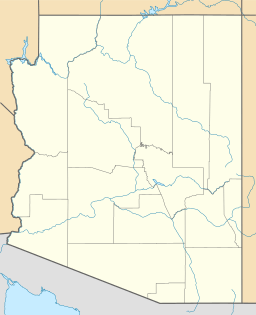Mormon Lake facts for kids
Quick facts for kids Mormon Lake |
|
|---|---|
 |
|
| Location | Coconino County, Arizona, United States |
| Coordinates | 34°56′33″N 111°27′21″W / 34.94250°N 111.45583°W |
| Basin countries | United States |
| Surface area | 600 acres (240 ha) |
| Average depth | 10 ft (3.0 m) |
| Surface elevation | 7,100 ft (2,200 m) |
| Settlements | Mormon Lake and Lakeview |
Mormon Lake is a special kind of lake in northern Arizona. It's called 'intermittent' because it doesn't always have water. Sometimes it's full, and other times it can dry up completely!
When the lake is full, it covers about 12 square miles. This makes it the largest natural lake in Arizona. But because it's usually only about 10 feet deep, its size changes a lot with the seasons. If there isn't much rain, the lake might turn into a marsh or even dry out.
Contents
About Mormon Lake
Mormon Lake is found in a beautiful area called Pleasant Valley. This whole area is part of the Coconino National Forest. This forest is famous for having the biggest group of ponderosa pine trees in North America.
Fun Activities
Many people love to visit the area around Mormon Lake. It's a great spot for:
- Camping
- Hiking
- Enjoying nature
Fish in the Lake
Sometimes, fish like bullhead catfish and northern pike are put into the lake. This is called 'stocking'. But because the lake can dry up, there might not be many fish after a dry season.
History of the Lake's Name
The lake got its name from Mormon settlers. These settlers moved to northern Arizona in the 1870s.
Early Settlements
The Mormon settlers built their main communities along the Little Colorado River. They also started small businesses in Pleasant Valley near the lake. These businesses included:
- A sawmill in 1876
- A dairy in 1878
- A tannery in 1879
However, these businesses were later left behind when the main communities along the Little Colorado River were closed. Today, you can still find small remains of the old mill site.
Communities Around the Lake
Two small towns, Mormon Lake Village and Lakeview, grew up near the lake. They were built during years when the lake had more water.
Forest Service Homes
On the hills overlooking the lake, there are over 80 private homes. These are called USFS recreation residences. They are built on land owned by the Forest Service. Most people use these as summer homes. Some people stay during the snowy winters, but they have to bring in their own water.
Public Campgrounds
The Forest Service also runs public campgrounds in the area. These are at places called Double Springs and Dairy Springs. They are older, classic campgrounds where people can enjoy the outdoors.
Images for kids
-
San Francisco Peaks viewed from the meadows at Mormon Lake during the summer monsoon in 2010.




